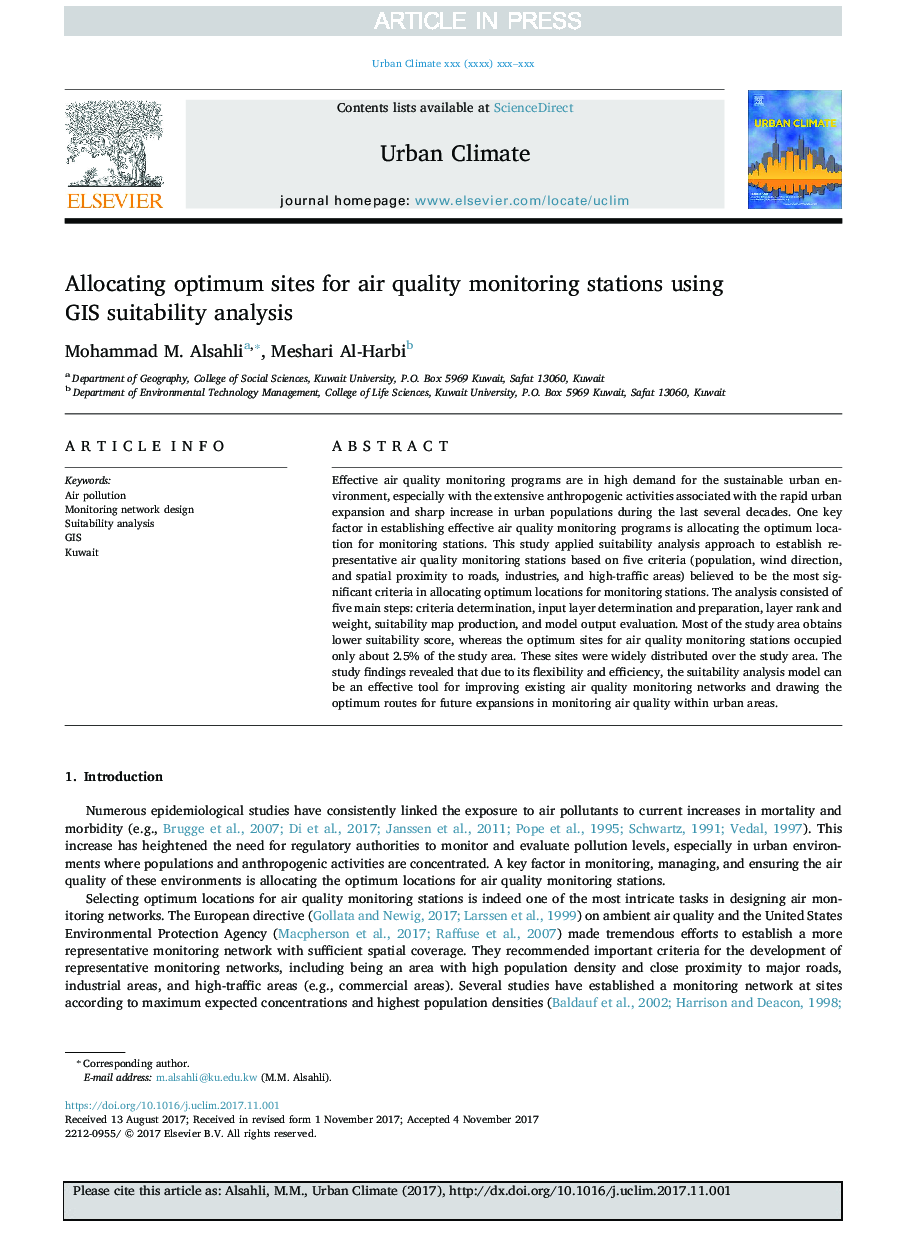| Article ID | Journal | Published Year | Pages | File Type |
|---|---|---|---|---|
| 6576929 | Urban Climate | 2018 | 12 Pages |
Abstract
Effective air quality monitoring programs are in high demand for the sustainable urban environment, especially with the extensive anthropogenic activities associated with the rapid urban expansion and sharp increase in urban populations during the last several decades. One key factor in establishing effective air quality monitoring programs is allocating the optimum location for monitoring stations. This study applied suitability analysis approach to establish representative air quality monitoring stations based on five criteria (population, wind direction, and spatial proximity to roads, industries, and high-traffic areas) believed to be the most significant criteria in allocating optimum locations for monitoring stations. The analysis consisted of five main steps: criteria determination, input layer determination and preparation, layer rank and weight, suitability map production, and model output evaluation. Most of the study area obtains lower suitability score, whereas the optimum sites for air quality monitoring stations occupied only about 2.5% of the study area. These sites were widely distributed over the study area. The study findings revealed that due to its flexibility and efficiency, the suitability analysis model can be an effective tool for improving existing air quality monitoring networks and drawing the optimum routes for future expansions in monitoring air quality within urban areas.
Related Topics
Physical Sciences and Engineering
Earth and Planetary Sciences
Earth and Planetary Sciences (General)
Authors
Mohammad M. Alsahli, Meshari Al-Harbi,
